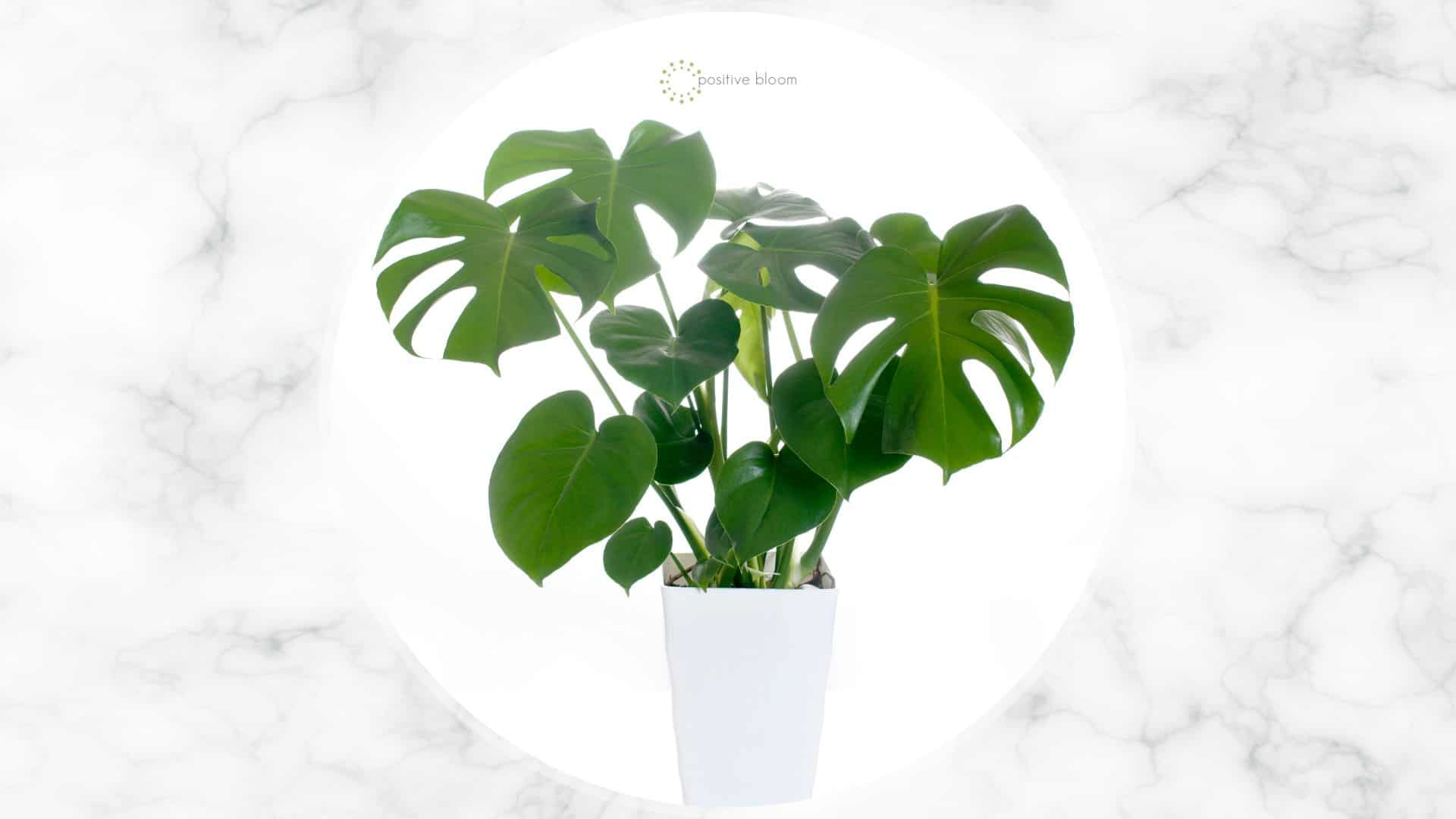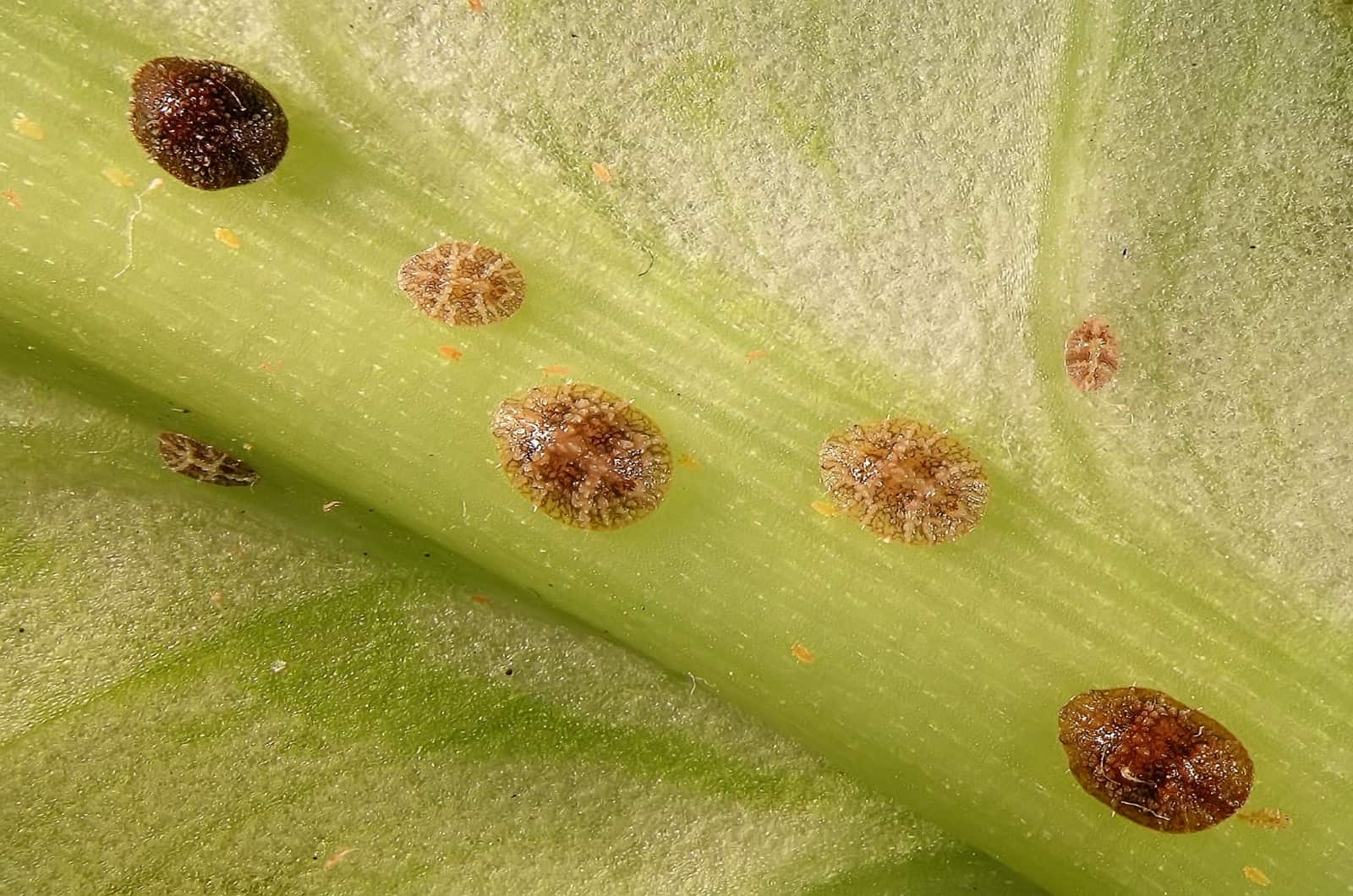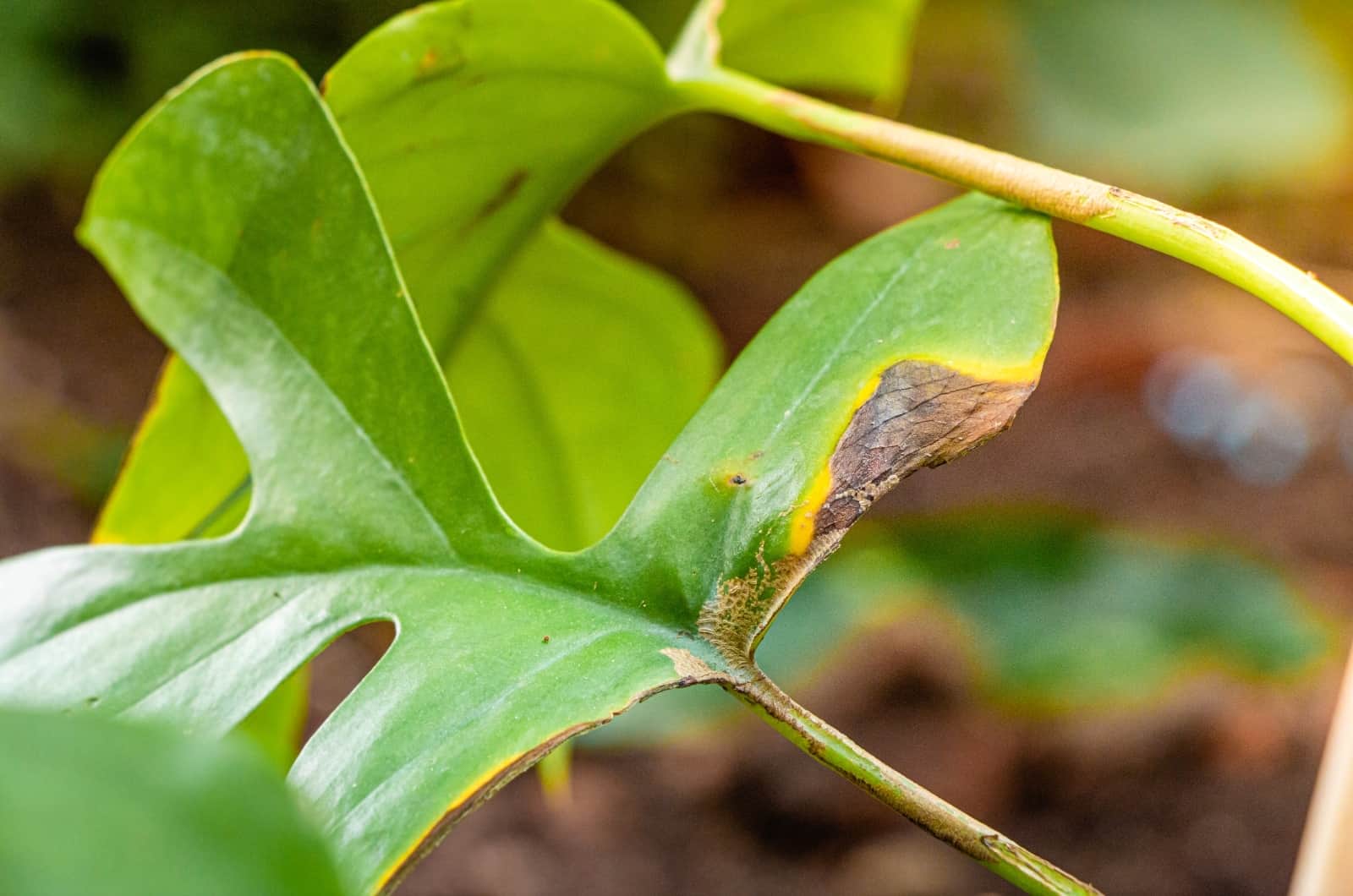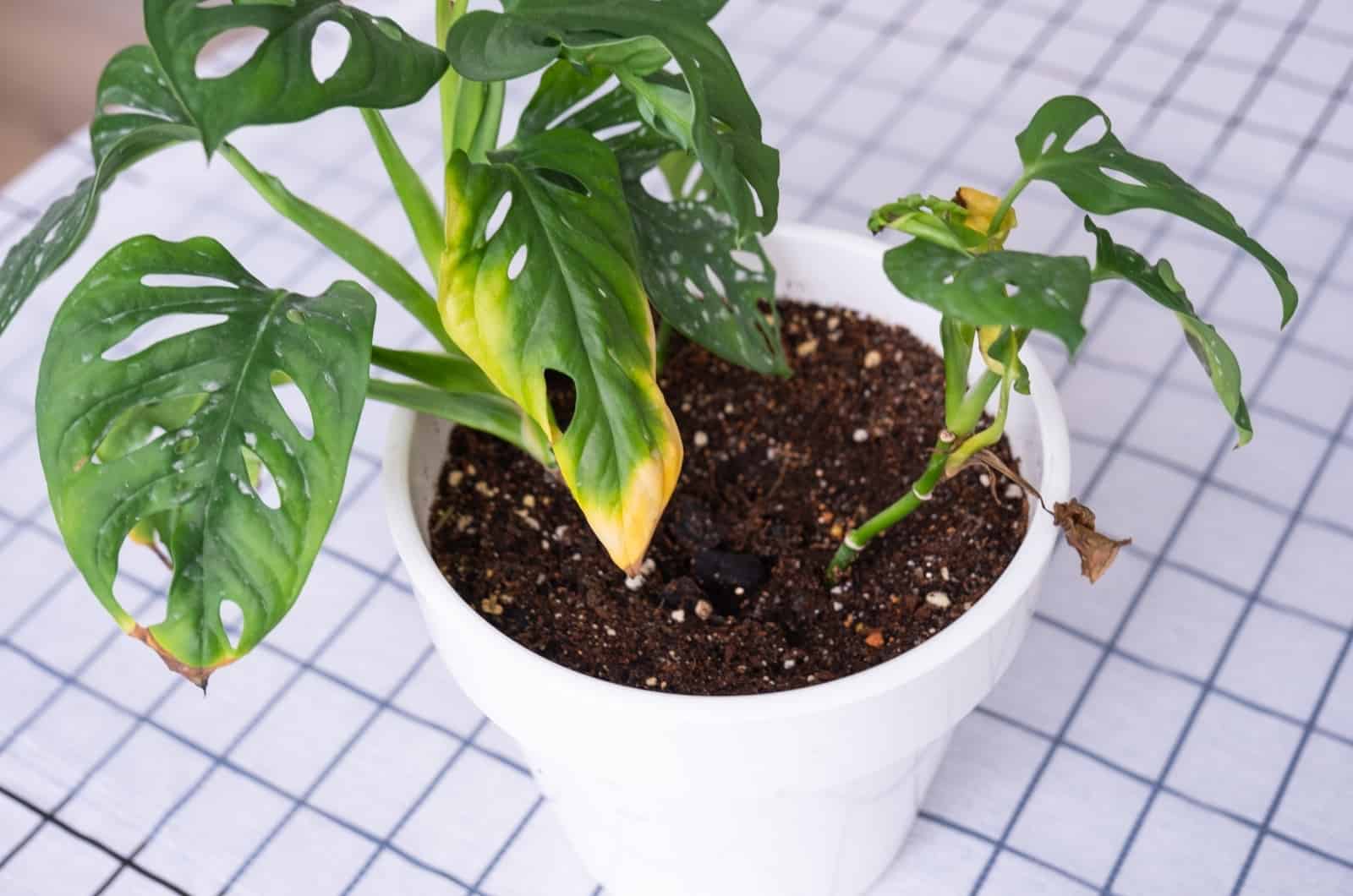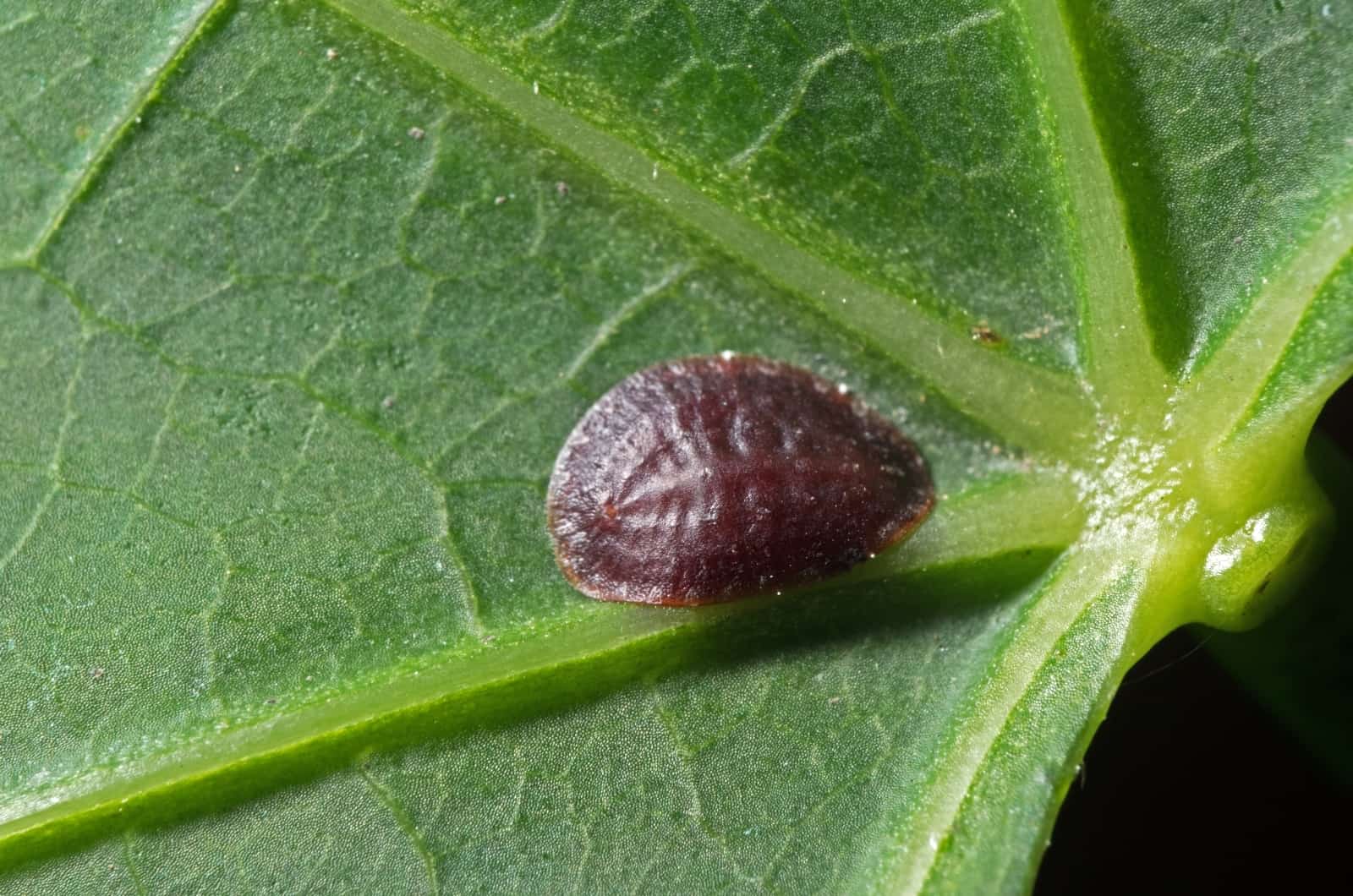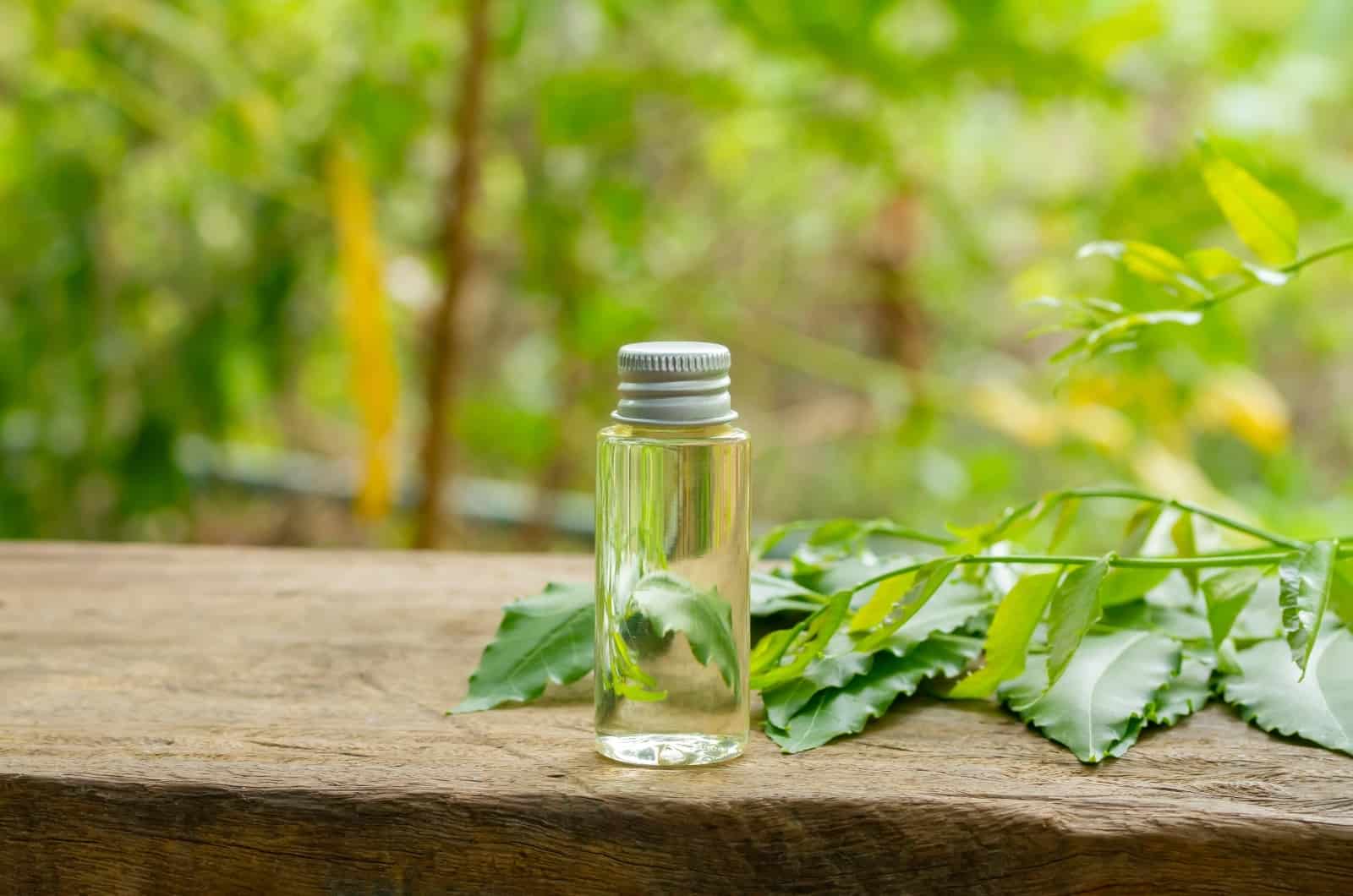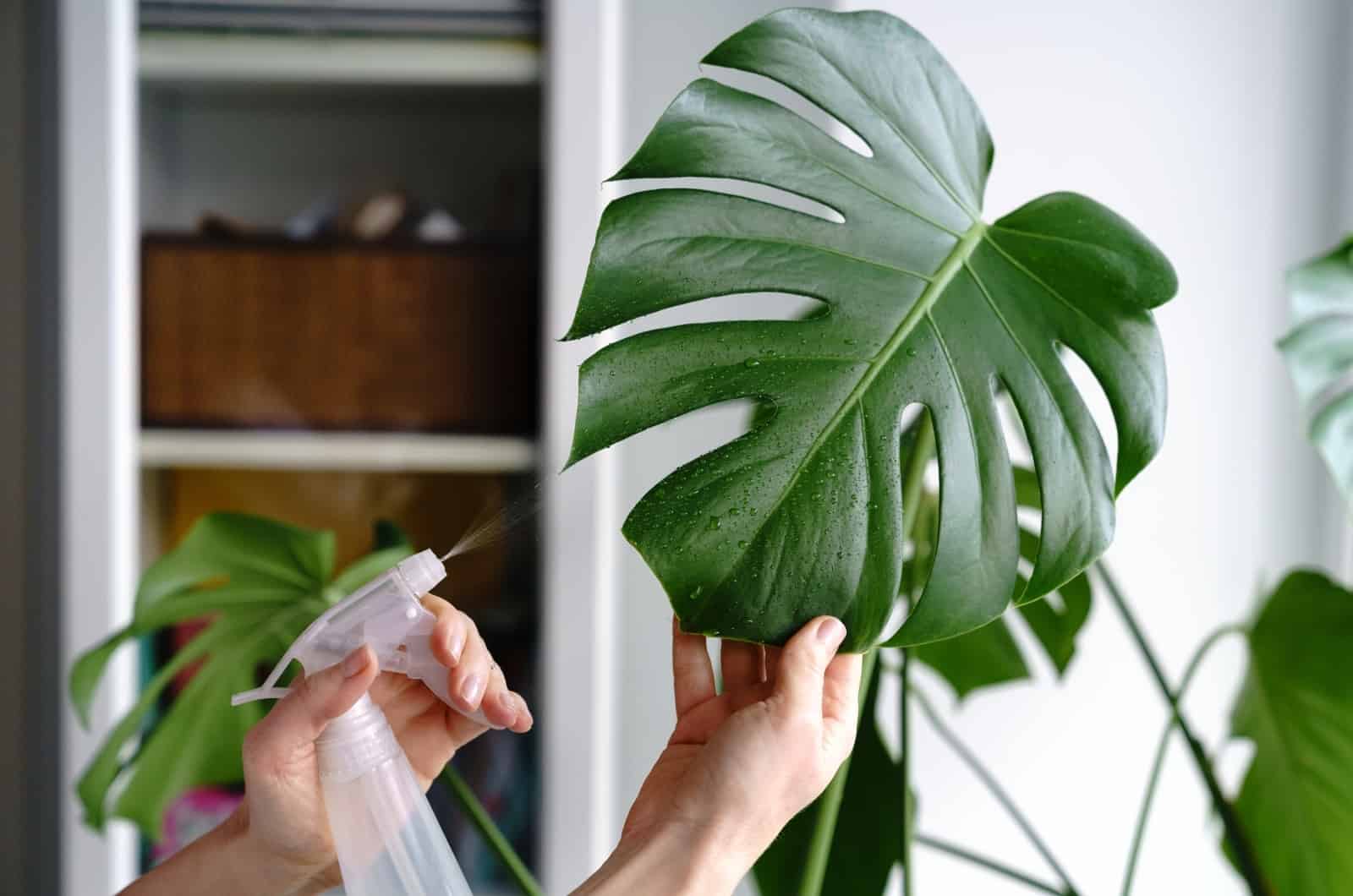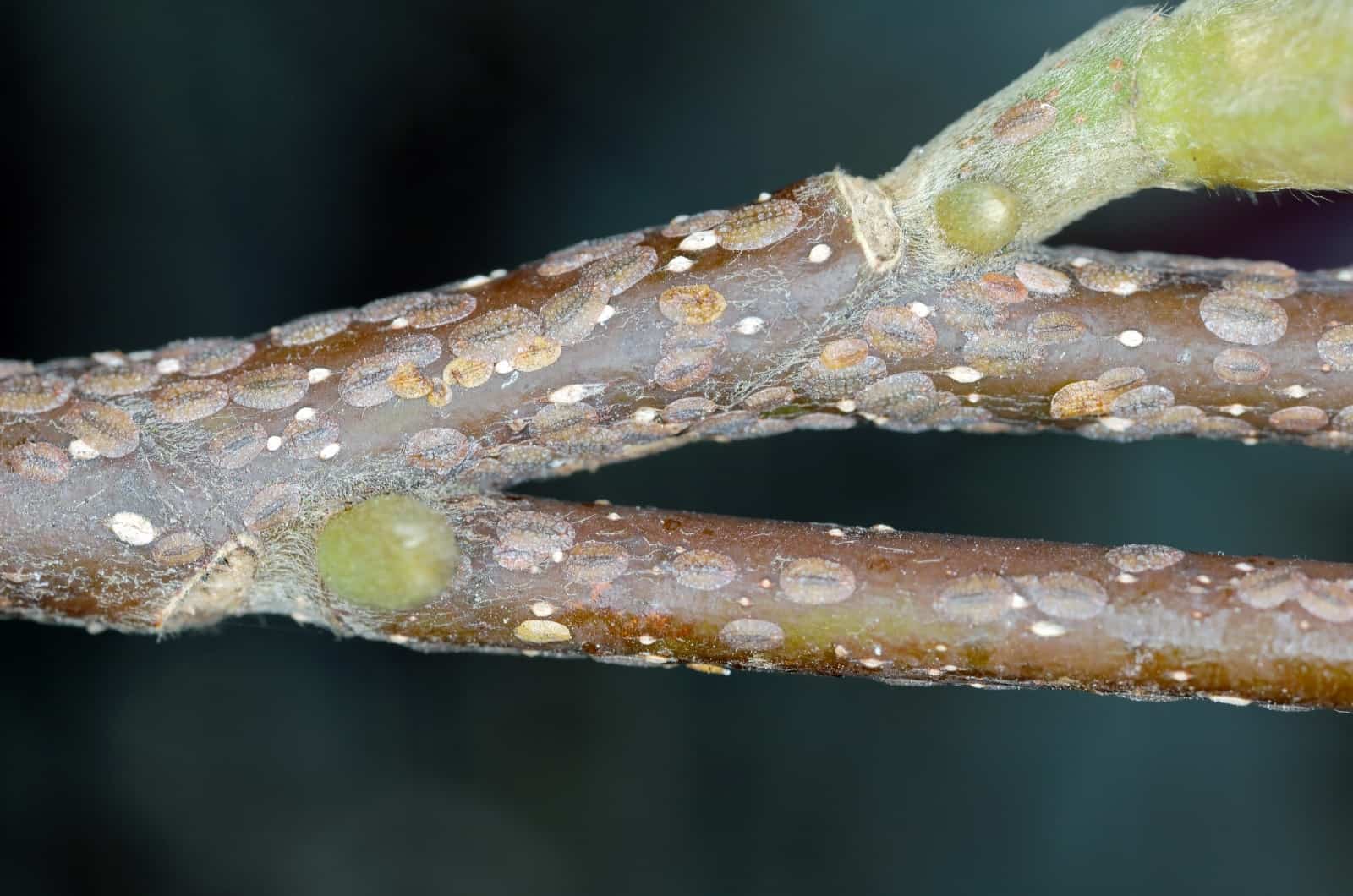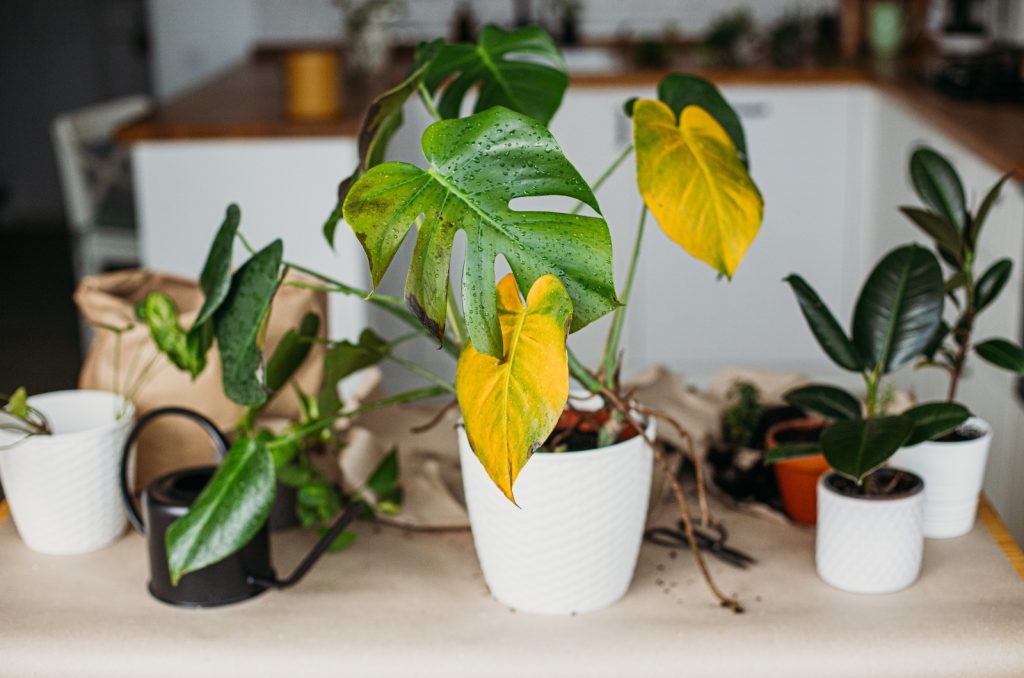A pest infestation is every gardener’s nightmare. No matter how well you take care of your plants, there still might be pesky pests that steal your plants’ nutrients. One of the most common pests that you might encounter are scales.
If you own a Monstera plant, immediately prepare yourself for scale infestation. Scale on Monstera plants is one of the biggest Monstera problems. If you notice any brown spots on the stems and leaves, examine the plant and look for scales – tiny brown insects with oval-shaped or round bodies.
There are two types of scales that infest Monsteras: armored and soft scales.
To learn more about the potential damage they can do to your plant, and also how to recognize and get rid of them, keep reading!
How To Recognize Scales On Monstera Plants
Scales are small insects (about ⅙ or ⅛ of an inch long) that can have brown, creamy, or black colored bodies. These sap-sucking insects belong to the superfamily Coccoidea and order Hemiptera.
These critters usually appear in groups – you will rarely see only one or two scales on your plants’ leaves.
They can also very easily spread to the other plants nearby, which is why you should immediately isolate the affected plant as soon as you see any brownish spots on the leaves or stems.
We already mentioned that two types of scales can infest Monsteras; armored and soft scales. They slightly differ from each other in their body shape and pest control methods.
Let’s look closer.
Types Of Scale On Monstera Plants
There are over a thousand scale-forming insect varieties. However, they can be classified into two distinctive types called armored and soft scales.
Soft scales have bumpy or dome-shaped, oval or round bodies that are slightly larger than the armored ones. These types of scales have waxy secretions all over their bodies. They appear more often on Monsteras compared to armored scales.
They are also easier to get rid of because the armored scales develop a hard shell around their body to defend themselves from predators. So, armored scales have shell-like bodies that serve like armor, hence the name “armored scales”.
The shape of their body can vary from elliptical and oval to elongated, but they don’t have bumps on their surfaces. These are often found on the lower leaf surfaces, but you can also spot them on leaf joints or stems.
It is harder to get rid of them because the pesticide has to penetrate the shell in order to get to the bug inside. Luckily, these types of scale are stationary and don’t spread very quickly. However, they are widespread in orchids, for instance.
Signs Of Scale Infestation
The scale insect, which is frequently found on the stems or undersides of leaves, resembles small, flat, or rounded shells.
When there is a serious scale invasion, these creatures can be seen with the naked eye. However, one or two scales are harder to spot.
These pests have several missions: to suck out the sap, steal the nutrients from your plant, and deposit their eggs – none of these things are good for your plant!
The most typical indication of a scale infestation is a blackish mold infestation, which is caused by the sticky honeydew that they leave behind.
White spots are another typical symptom, although they can also be brought on by edema, powdery mildew, or too much salt.
Your prized plant’s leaves will most likely turn brown or black and die off if you don’t act quickly.
Here are the signs:
• Yellow, brown, or black leaves
• Brown spots on the leaves
• Blackish mold on the soil
• Flies around the soil
• Drooping leaves or stems
• Presence of sticky substance
• Leaves wilting
• Stunted growth
Possible Damage To Monstera Plants
So, the question is, are these infestations fatal to your plant and what is the potential damage they can cause?
Well, truth be told, this is not just something that your plant can deal with on its own. As you can already see from the signs of infestation, these pests can cause serious damage to your Monstera plant.
First of all, they are sap-sucking, which means that they will damage the plant’s tissue and cells. Some scale varieties can even inject toxins into your precious Monstera plant.
Severe infestation can lead to wilting, leaves falling off, and eventually the entire plant deteriorating.
What Attracts Scales To Monsteras?
Scales won’t infect your Monstera for no reason. In most cases, inadequate Monstera plant care leads to many issues, including pest infestation and root rot. This is because the plant’s overall health is weaker, which makes the plant more susceptible to pests and diseases.
Let’s look at the causes in more detail.
Wrong Potting Soil
Monstera plants need soil that is well-draining and porous. These are tropical plants that thrive in moist environments, which is why it is important to constantly keep the soil moist.
However, if your Monstera is growing in the wrong potting soil, it can lead to problems such as overwatering and stunted growth. If the water doesn’t drain quickly enough, the soil will become waterlogged.
This means that the water won’t be able to drain, which leads to Monstera plants growing in soggy soil. As a result, there are no air pockets in the waterlogged soil, and the plant roots essentially drown. This usually happens with heavy and compact types of soil, but also ones that are not well-draining.
Growing plants in a pot with no drainage holes in the bottom can also contribute to this issue. Drainage holes allow for the excess water to drain away instead of creating a soggy soil.
If you want to know what the best soil for Monstera plants is, then check out: What Makes The Best Soil For Monstera + 5 Great Options In 2023.
Overwatering
Since Monsteras need constantly moist soil, you will have to find the perfect watering schedule to achieve this without overwatering your precious plant. Yellowing of Monstera leaves is the first sign of overwatering. Because these plants require oxygen, their leaves may start turning brown without it.
Soil’s typical airflow is disrupted by too much water, which stops the air from getting to the roots of the plants. The plant’s need for oxygen is reduced as a result, and the leaves react with brown spots on their surfaces.
Mold on the soil and leaf blisters are further indications of overwatering. Still, you can touch the soil to feel if it is wet before watering.
Root rot is usually the issue if the soil begins to smell strange. Another indication of this fungal infection is yellowing of the lower leaves. However, this one issue can weaken the entire plant and make it more susceptible to pests like scales.
These issues are usually fixed by repotting, applying pesticides or fungicide, and following the right watering schedule – it all comes down to checking the soil before watering. If it is still wet, you should postpone watering for a few days. If the topsoil is dry, then water the plant.
How To Get Rid Of Scales
You and your plant have to fight off the infestation together. Luckily, there are a few methods that can help you get rid of scales, including applying pesticides, introducing predators, and isolating your plant.
We will discuss them now in more detail.
1. Insecticidal Soap
Scales can be eliminated using insecticidal soap because they don’t have an outer shell in the early stages.
If your Monstera plant has been severely infested for some time, you should combine this procedure with another from this section because this solution cannot kill the scale while it is in its mature phases of growth.
The materials required are water, detergent or liquid dish soap, and some horticultural oil like soybean or vegetable oil. Add one cup of oil and one tablespoon of soap to one cup of warm water. Then grab a spray bottle, fill it with the mixture, and spray it on the affected areas.
This remedy can be applied to plants with powdery mildew and various pest infestations such as fungus gnats.
A gallon of water can also be added to a mixture of 1 tbsp of baking soda and 1/2 tbsp of liquid dish soap.
2. Neem Oil
Neem oil is currently a widely used pest control technique. This is one of the best organic pesticides that can also be used as a fungicide. It won’t harm you or your plant if applied correctly. I used it religiously when my Monstera Dubia was suffering from a pest infestation.
After applying it, the plant will absorb the compounds in neem oil and pass them on to any scales that feed on the plant after. The scales will be completely exterminated and won’t develop into the next growth stage.
Before utilizing neem oil, there are a few things to keep in mind. Read the directions first, paying close attention to the component ratio. Make sure to completely soak the plant with it and apply it carefully because neem oil can potentially burn plant leaves.
Aphids, mealybugs, and other pests can all be treated with neem oil.
3. Remove Scale By Scraping
This technique is only applicable to light infestations. It would be impossible to remove every scale from a Monstera plant that’s heavily afflicted.
Scraping off scale insects is the first method I’ll show you for getting rid of them, although this technique only works for minor infestations.
The first thing that you should do is prepare a dull knife and your patience for this unusual technique. Consider using rubbing alcohol after scraping off any scale to ensure that they don’t appear once again.
4. Isopropyl Alcohol
For removing scale, I strongly suggest using isopropyl alcohol because it works well, is readily accessible, and is reasonably priced. All you need for this method are a cotton swab, a q-tip, or a spray bottle.
I would recommend you dilute the solution even if the product’s instructions don’t say so. This is done in order to prevent leaf burns.
Spray the scale with the solution after pouring it into a spray bottle. You could also soak a cotton swab and rub the affected area. Pests are very cunning, so be sure to cover every part of your plant when applying sprays or rubs. Don’t forget to rub or spray the undersides of the leaves too!
Isopropyl alcohol treatment ought to be effective after just one application if your Monstera only has a minor scale infestation.
If the infestation is severe, you might need to repeat the procedure several times until all the scale has been permanently removed!
5. Introduce Predators
Ladybugs are scale predators. Introducing natural predators to deal with bug infestations is a common procedure (plus it’s fun!). These are very effective methods because ladybugs will eat up all of the scales!
In the end, you will be happy, your plant will be happy, and the ladybugs will also be satisfied!
These ladybugs can be ordered online for fair prices. Once you get them, just release them onto the soil.
6. Pesticides
Pesticides are a backup plan for scale that you should use if everything else fails. Imidacloprid, a highly effective chemical that consistently triumphs in the war against scale, is one of the most popular pesticides out there.
Follow the instructions carefully when using this product, since failure to do so could result in the death of your Monstera plant.
7. Remove Affected Leaves
Another way to get rid of scales is by pruning the affected leaves. This will prevent the spread of pests to other parts of the plant. You can easily spot affected leaves due to discolorations and yellowing.
Lightly infected leaves shouldn’t be removed because the treatments listed above will accelerate their recovery.
It would be better to remove the leaves if they are seriously contaminated.
8. Isolate The Plant
Once you see any discolorations or signs of infestation, you should isolate the plant instantly. You should then examine your other plants to see if the pests have already spread.
Don’t put your plant back with the other plants until it has fully recovered because there might still be some critters crawling around!
How To Prevent Scales On Monstera Plants
The best way to treat a pest infestation is preventing them from infesting your plant in the first place. It is highly unlikely that a healthy plant will get infested by pests.
There are some tips and tricks that you can use to prevent scale infestation.
Clean Pots And Gardening Tools
Although it may seem like a lot of work, plants need sterile surroundings. This refers to the containers and gardening equipment you plan to employ when repotting, pruning, or propagating.
Using contaminated pots and tools can spread infestations, especially if the insects lay eggs in pots.
Always clean the pots when repotting, and you should also clean new pots that you have recently bought because you never know where they have been.
As well as pots, you should also keep your gardening tools nice and tidy. For instance, a scale or spider mite egg on your knife or pruners could easily spread to your plant. Keep in mind that pests proliferate swiftly; two pests can quickly grow into a colony.
If you want to prevent spreading an infection, sterilization is crucial. To sanitize your gardening tools, use bleach or isopropyl alcohol.
Investigate Your Plant Regularly
Checking your plant regularly will help you catch the infestation before it takes over your entire plant. It will save you time, energy, and money, but most importantly, the stress that comes with it!
Before you water your plant, you must first inspect the soil. The next step is to confirm that all the other requirements have been satisfied.
If you spot any of the abovementioned signs, examine the undersides of the leaves to see if any brown insects have settled in.
Examine Plants Before Bringing Them Indoors
There are certain indoor plants that can grow perfectly fine outdoors during the winter. However, we tend to bring them inside if they are not frost-hardy. These plants have adapted to growing outdoors and developed defense mechanisms that help them survive.
So, these plants might be carrying some pests or diseases without you even realizing it. You put the health of all the other plants in your home at risk if you bring infested outdoor plants inside during the winter.
So, unless you want to transmit pests and diseases throughout the entire house, carefully inspect your plants before bringing them inside.
Follow The Right Plant Care
Monstera plants like warm temperatures, high humidity levels, and frequent watering. You should keep them in temperatures of around 70 degrees Fahrenheit. These plants are not frost-hardy, which means that you have to bring them indoors as soon as the weather gets cold.
You should also keep them away from drafty areas like near vents or air conditioners. Keep them away from heat sources as well (fire places, radiators, space heaters, etc).
The optimal humidity levels are around 60%. Get a humidifier or mist your plants regularly.
Water them once the topsoil is dry, and apply high-nitrogen fertilizers during the growing season. Repot the plant when it has outgrown its current pot or in case of root rot.
To Sum Up
Scale on Monstera plants is something that almost every Monstera owner has dealt with. Since this is one of the most common issues, there are numerous methods for treating it.
If you religiously stick to the correct plant care guide, then there is a high chance that you won’t have to deal with these pesky pests. However, mistakes can happen, but that doesn’t mean that you will lose your plant.
You should do all that is in your power to save your plant. Try organic options first, then if this doesn’t work, employ pesticides – I am sure that they will get rid of every scale that has been hiding on your Monstera!
That’s all, folks. I hope this article was helpful.
Until next time!

